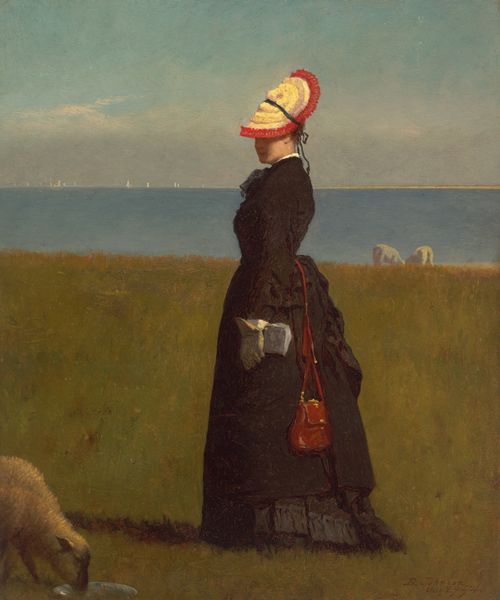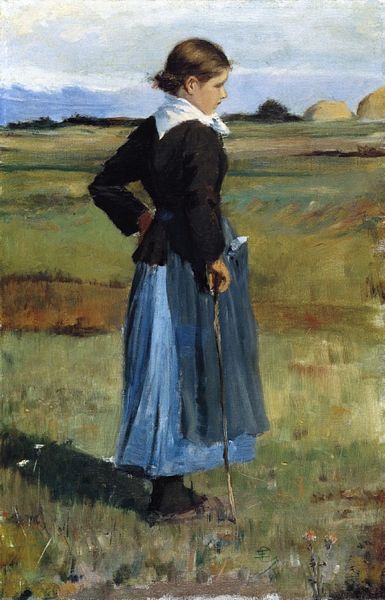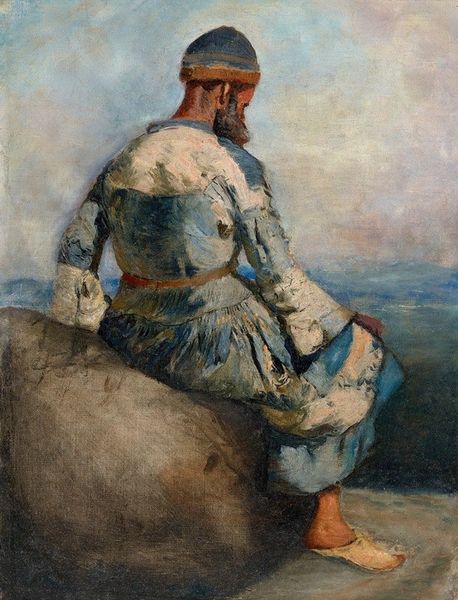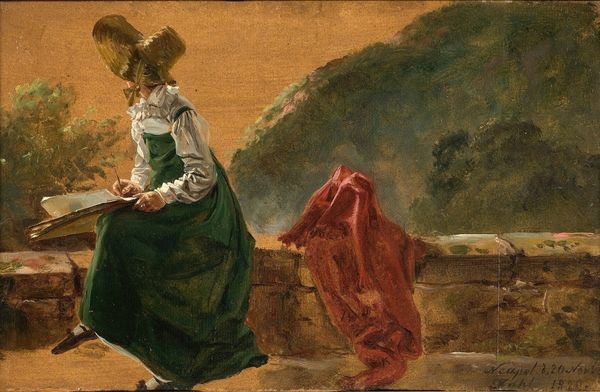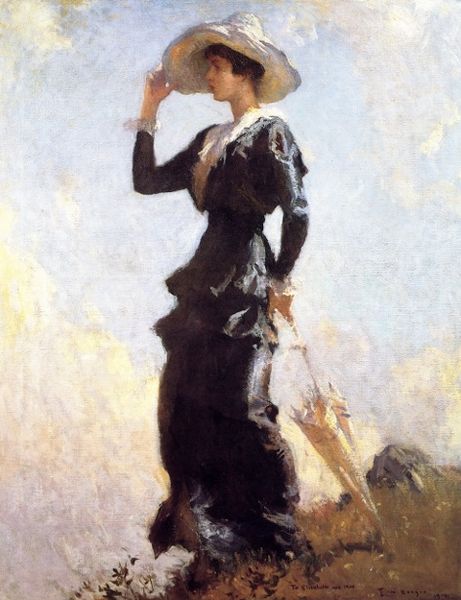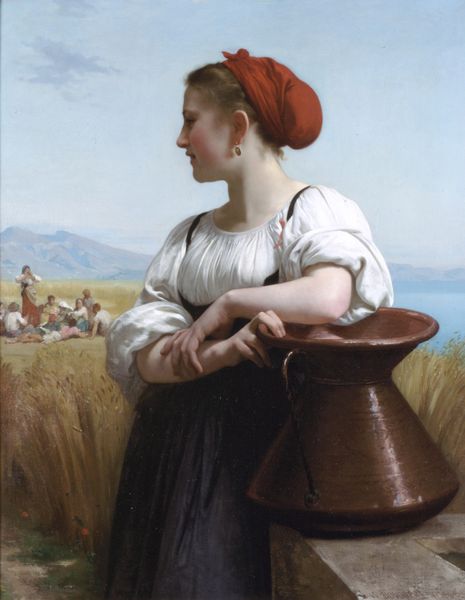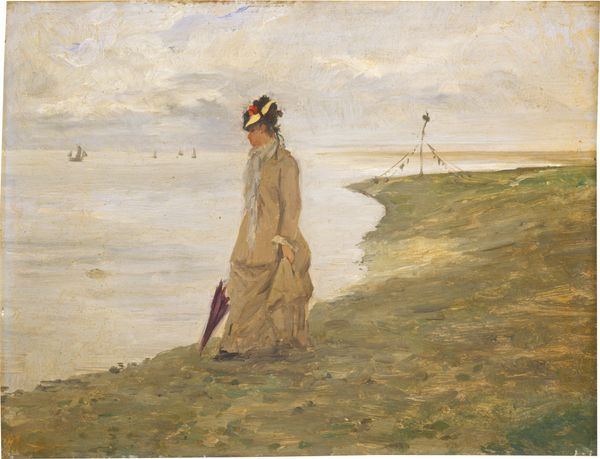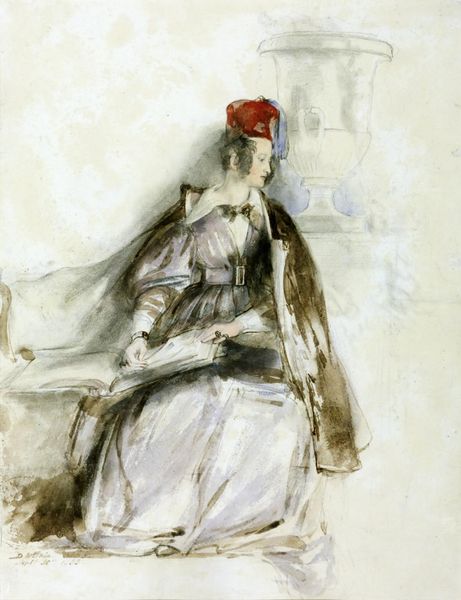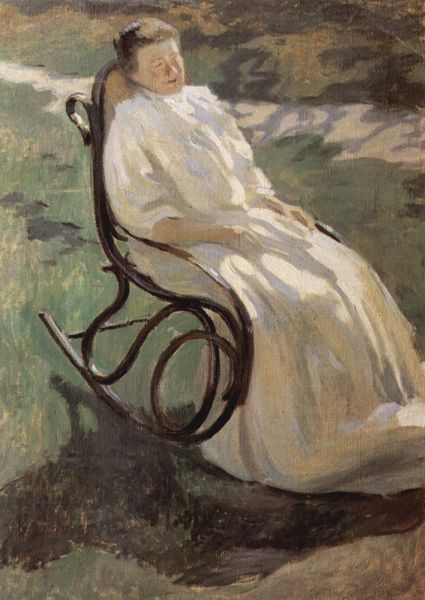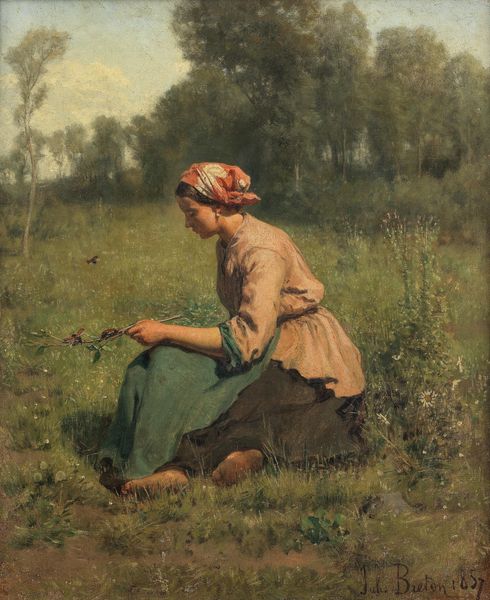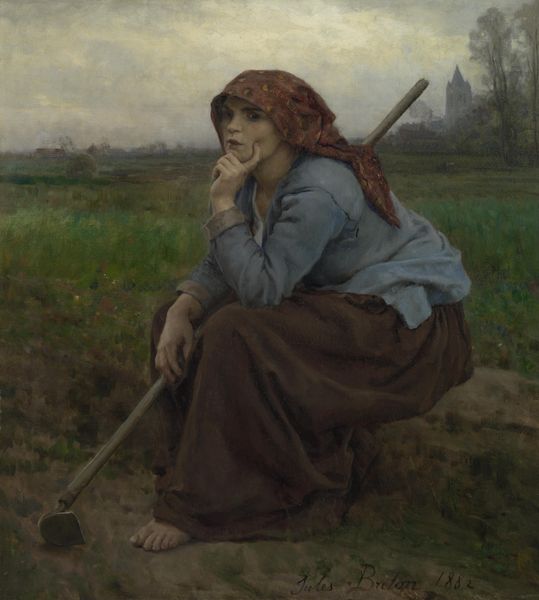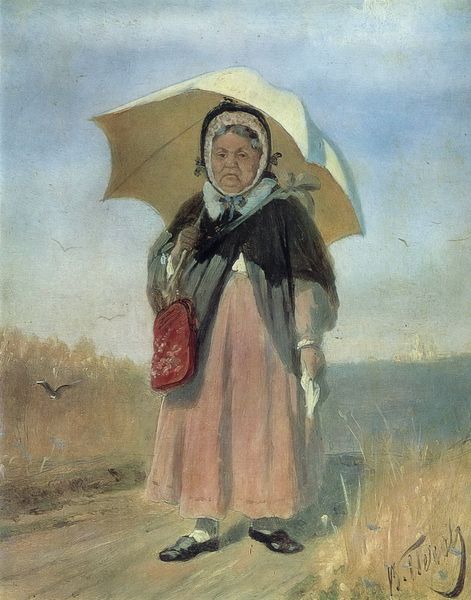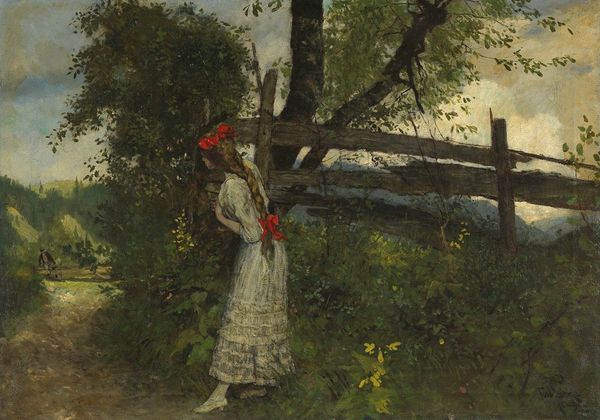
Dimensions: 63.8 x 47.3 cm
Copyright: Public domain
Editor: So, this is Eastman Johnson's "Woman Reading," from 1874. It's an oil on canvas, and it strikes me as remarkably still, almost frozen. The figure is positioned on a meadow with an ocean backdrop; the overcast sky really dampens the atmosphere. How do you interpret this work, especially given the material choices and their impact? Curator: Well, consider the weight of oil paint itself, how Johnson layers it to depict fabric, landscape, even the implied weight of the book she holds. What kind of labor went into its production and who was able to access not just the artwork, but the depicted lifestyle, materials for garments, literacy itself? Think of this in terms of 1874, just after the Civil War. Who is given leisure, the time to read? Editor: That's a good point. The woman's clothing, with the lace and the elaborate bonnet, suggests a certain economic class. How would you say the material and social context informs our reading of the landscape? Curator: The landscape itself, rendered en plein air, shows the emerging leisure class accessing the outdoors. But it's a controlled nature; the sailboat on the water is one controlled by man. This connects with Romanticism's exploration of man's relation to Nature but filtered through social hierarchy and economic status. Even the "realism" isn't neutral, it's representing the world from a certain perspective enabled by material resources. Is the ocean really her surrounding if she has access only by economic power? Editor: So the materiality and technique here aren't just about aesthetics but about the social power dynamics they reveal and uphold. I never would have thought of it that way. Curator: Exactly! The physical making and its representation reflects very clearly the material reality of the artist, subject, and likely patron as well. Thinking this way helps to decode how the artwork contributes to a bigger social picture. Editor: This perspective makes me think about the accessibility of art now, and what materials are used to make art and how this represents the bigger socio-economic picture of today! Curator: Absolutely. Looking closely at production and materials opens a door into understanding broader socio-economic dynamics, even today.
Comments
No comments
Be the first to comment and join the conversation on the ultimate creative platform.
